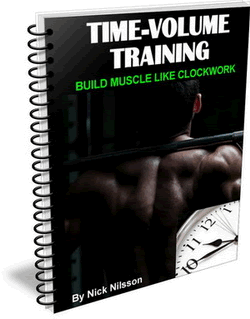Many of us engage in weekly or daily workouts to stay fit and healthy. Some exercises may be more intense and physically challenging, but the breathing workout is one of the simplest and most overlooked practices.
A study on a five-minute breathing workout called the High-Resistance Inspiratory Muscle Strength Training (IMST) found that this form of exercise helps lower blood pressure in adults (without needing medicine) and prevents cardiovascular disease as well.

While everyone breathes, some people may not be doing it correctly or efficiently. Patrick McKeown's book The Oxygen Advantage highlights the importance of knowing how to breathe correctly, whether you're an athlete or a couch potato. According to McKeown, learning to use oxygen efficiently can dramatically improve cardio fitness, even if you're out of shape.
Today, we'll discuss how efficient breathing can enhance your workouts:
Start Slow
Depending on your reasons for working out, it can be tempting to jump into intense and complex workout routines immediately, even when your lungs and body aren't ready for that yet. In a previous Fitstep post about home exercises, we listed walking as part of cardiovascular exercises you can do at home. While most people would shrug it off, walking is a great starting point for people new to exercising and is still an effective way to sweat and burn calories.
Walking during specific periods in a day can help regulate your breathing and get your lungs ready for heavier and more intense workouts in the future. Starting slow doesn't mean it's any less of a workout. Once you make walking part of your routine, you can move on to more cardio exercises like cycling or running.
Breathe through your nose
Some people tend to breathe through their mouths, whether subconsciously or out of a childhood habit. Author of Breath: The New Science of a Lost Art, James Nestor participated in a 10-day study during which his nose was completely plugged. He found that breathing through his mouth raised stress levels, increased his snoring, and caused him to develop sleep apnea.
On the other hand, breathing slow and low through your nose can help relieve stress and reduce blood pressure, like the IMST breathing workout we mentioned earlier. Try not to breathe entirely with your mouth when in the middle of your fitness activities. Instead, try to regulate your breathing through the nose to slowly decrease heart rate — especially for super intensive cardio routines.
Don't hold your breath
Lastly, don't pressure yourself into holding your breath during workouts. This is common in people who are just starting with workout equipment like weights and dumbbells. While there are certainly advantages to intentional breath holding, usually found among athletes who train for sports like diving, holding your breath can result in dangerous consequences from passing out to chest pains. Holding your breath also carries risks such as increasing your blood pressure and the risk of brain damage, according to the Journal of Applied Physiology.
Instead of dangerously experimenting with holding your breath, if you're interested in increasing your lung capacity for specific sports or cardio training, inquire with your healthcare providers and look into apnea training. This will prevent you from endangering yourself in case of any lung or respiratory conditions.
![]()
More From Fitstep.com
| How Do I Build a Bigger Butt? | |
| How to Spot Reduce Stomach Fat | |
| How I Got My Butt Kicked By a 68 Year-Old Woman | |
| Get a Ripped Six-Pack With Abdominal Sit-Ups |
Share This Page...
---
Home -> Fitness For Beginners -> Articles -> Stay Healthy While Travelling



